Are City of Lincoln Ne Wells Working Again
2021 Annual Drinking H2o Quality Study
Lincoln H2o Organisation
Operating Philosophy
Lincoln H2o System is dedicated to providing quality h2o and customer service to the customs. This philosophy results in reliable and price-effective operations, efficient service to customers, and a safe and adequate supply of water.

Why This Report?
The Safety Drinking H2o Act requires Lincoln Water Arrangement to annually issue a report describing the quality of your drinking water. This written report fulfills that obligation and puts important data about the quality of your drinking water into the hands of our valued customers. This report provides an overview of last year's h2o quality information collected from Jan 1 through December 31, 2021, including details about the source of your water, what it contains and how information technology compares to state and federal standards.
Este formulario tiene información muy importante acerca del agua que usted bebe. Consiga que alguien se lo lea en español.
Báo cáo này chứa thông can quan trọng về nước bạn uống. Tìm một người đọc nó cho bạn bằng tiếng Việt.
![]() PDF Version
PDF Version  (PDF, 3MB)
(PDF, 3MB)
In the United States, drinking water sources include rivers, lakes, streams, ponds, reservoirs, springs and groundwater. Lincoln's h2o source is groundwater that is naturally loftier in quality. It comes from wells along the Platte River almost Ashland. Approximately one-one-half of the supply is groundwater and approximately half is groundwater nether the straight influence of surface water. In 2021, more than than 13.6 billion gallons of water were pumped from these wells to serve the 292,000 people who used an average of about 37.5 one thousand thousand gallons of h2o each 24-hour interval.
A source water assessment of our water supply was completed past the Nebraska Department of Surround and Energy (NDEE). The assessment includes maps, an inventory of potential contaminant sources and a conclusion of the vulnerability of the organisation to contamination. If y'all accept whatever questions or would like to view the source water assessment, telephone call John Keith, 402-441-1622, to schedule an engagement.

As h2o travels over the surface of the country or through the ground, naturally occurring minerals dissolve, and the water tin pick up substances resulting from the presence of animate being or human activities. Factors that can touch the quality of our source water include microbial contaminants, organic or inorganic contaminants, pesticides, herbicides, and radioactive contaminants. To ensure that tap water is prophylactic, U.Due south. Environmental Protection Agency (USEPA) Safe Drinking Water standards limit the amount of contaminants in the water supplied to customers. Post-obit the treatment process, Lincoln'southward drinking water continues to encounter all of these standards. Lincoln's water does contain pocket-size amounts of atrazine and arsenic simply these levels remain below USEPA Safe Drinking Water standards.
Atrazine is a herbicide used by farmers to kill weeds in corn and grain sorghum. Atrazine is practical to the fields at planting time. When it rains, atrazine is washed from fields and enters streams and rivers.
Arsenic, a naturally occurring element associated with soil and stone, is too detected in Lincoln's drinking water and remains beneath USEPA limits. The Safe Drinking Water standard (the Maximum Contaminant Level) for arsenic is 10 parts per billion (ppb). While Lincoln's drinking water meets USEPA'southward standard, information technology does contain between 6.9ppb and 7.threeppb arsenic based on testing performed in 2021. USEPA's standard balances arsenic's possible health furnishings against the cost of removing information technology from drinking h2o. USEPA continues to research the wellness effects. At concentrations much higher than regulatory levels, arsenic is known to cause some types of cancer and other health bug. Lincoln Water Organization continues to evaluate options for hereafter treatment and removal of arsenic as regulations crave.
Thanks to the natural filtration of groundwater, nature has already done much of the work in enhancing the quality of Lincoln's water. Lincoln's source water contains iron and manganese, which tin stain article of clothing and plumbing equipment if left untreated. To remove these and other unwanted substances, h2o is pumped to the water treatment plants. The water flows through one of two processes earlier it is distributed to your abode or business.
The oldest process, highly constructive since the 1930s, uses aeration, chlorination, detention and filtration. An exact amount of chlorine is added to the h2o in a large underground reservoir. The water is held in the reservoir for upwardly to ii hours. This allows the chlorine to inactivate microbes. Information technology also oxidizes iron and manganese to form particles which are so trapped in the sand filters.
The second process uses ozone technology. Ozone, an extremely strong oxidizer and disinfectant, quickly inactivates microbes. It likewise causes atomic number 26 and manganese to grade particles which are and then removed in the filtration process.
The next footstep is vital to protecting the health of our community. One time the water passes through the filters, small just exact amounts of chlorine and ammonia are added. These chemicals combine to form a disinfectant called "chloramine," which limits the growth of bacteria in the Metropolis's water distribution pipes. Finally, fluoride is added to help prevent tooth decay.
Special Health Requirements
While the presence of chloramines in our water is not a cause for business organisation among the general public, home dialysis patients, immuno-compromised individuals and aquarium owners must have special precautions before the water can be used.
Water used for kidney dialysis equipment may require further treatment. Delight contact your doctor or dialysis technician to ensure that your home equipment is adequate and proper tests are being fabricated every time it is used.
Some people may be more than vulnerable to contaminants in drinking water than the full general population. This includes immuno-compromised persons, such as those with cancer who are undergoing chemotherapy, those who have undergone organ transplants, people with HIV/AIDS or otherimmune system disorders, some elderly people and infants. These customers and caregivers should seek advice about drinking h2o from their health care providers. USEPA and Centers for Disease Control (CDC) guidelines on how to lessen the chance of infection past Cryptosporidium and other microbial contaminants are available by calling the Safety Drinking H2o Hotline at 800-426-4791.
We monitor for the regulated parameters listed below. Whatever contaminants found in the treated water are noted in the tables in the Test Results section.
Inorganic Chemicals
- Antimony
- Arsenic
- Asbestos
- Barium
- Beryllium
- Cadmium
- Chromium
- Copper
- Cyanide
- Fluoride
- Lead
- Mercury
- Nickel
- Nitrate
- Nitrite
- Selenium
- Thallium
- Total Chlorine
Constructed Organic Chemicals
- two,four – D
- two,4,5 - TP (Silvex)
- Alachlor
- Atrazine
- Benzopyrene
- Carbofuran
- Chlordane
- Dalapon
- Di(ethylhexyl)adipate
- Di(ethylhexyl)phthalate
- Dibromochloropropane
- Dinoseb
- Diquat
- Endothall
- Endrin
- Ethylene Dibromide
- Heptachlor
- Heptachlor epoxide
- Hexachlorobenzene
- Hexachlorocyclopentadiene
- Lindane
- Methoxychlor
- Oxamyl
- PCBs Total
- Pentachlorophenol
- Picloram
- Simazine
- Toxaphene
Clarity
- Turbidity
Volatile Organic Chemicals
- Benzene
- Carbon Tetrachloride
- 1,2-Dichloroethane
- o-Dichlorobenzene
- p-Dichlorobenzene
- 1,ane-Dichloroethylene
- cis-ane,2-Dichloroethylene
- trans-1,2-Dichloroethylene
- Dichloromethane
- 1,2-Dichloropropane
- Ethylbenzene
- Monochlorobenzene
- Styrene
- Tetrachloroethylene
- Toluene
- 1,2,4-Trichlorobenzene
- 1,1,1-Trichloroethane
- ane,1,two-Trichloroethane
- Trichloroethylene
- Xylenes (full)
- Vinyl Chloride
Disinfection By-products
- Bromate
- The amounts of these five contaminants are added together to become the corporeality of Haloacetic Acids (HAA5):
- Dibromoacetic Acid
- Dichloroacetic Acid
- Monobromoacetic Acid
- Monochloroacetic Acid
- Trichloroacetic Acid
- The amounts of these 4 contaminants are added together to get the amount of Total Trihalomethanes (TTHM):
- Chloroform
- Bromodichloromethane
- Dibromochloromethane
- Bromoform
Radioactive Contaminants
- Gross Alpha Emitters
- Radium 226
- Radium 228
- Uranium

Key to Test Results
- Activeness Level - The concentration of a contaminant which triggers treatment or another requirement which a water system must follow.
- Treatment Technique - a required process intended to reduce the level of a contaminant in drinking h2o.
- MCL - Maximum Contaminant Level: The highest level of a contaminant allowed in drinking h2o. MCLs are prepare as close to the MCLGs as viable using the all-time available treatment technology.
- MCLG - Maximum Contaminant Level Goal: The level of a contaminant in drinking h2o below which there is no known or expected adventure to health. MCLGs allow for a margin of safe.
- MRDL - Maximum Residual Disinfectant Level: The highest level of a disinfectant allowed in drinking water. In that location is disarming evidence that addition of a disinfectant is necessary for control of microbial contaminants.
- MRDLG - Maximum Residuum Disinfectant Level Goal: The level of a drinking water disinfectant beneath which there is no known or expected gamble to health. MRDLGsouth do not reflect the benefits of the utilise of disinfectants to control microbial contamination.
- ppm (parts per one thousand thousand) = mg/Fifty (milligrams per liter) - One ppm corresponds to 1 gallon of water in one meg gallons of water.
- ppb (parts per billion) - One ppb corresponds to 1 gallon of water in 1 billion gallons of water.
- ND - Not detected
- pCi/50 - pico curies per liter (measure of radioactivity)
- NTU - Nephelometric Turbidity Unit: A mensurate of the cloudiness of the water
- LRAA - Locational Running Annual Boilerplate: An ongoing annual average calculation of data from the most recent four quarters at each sampling location.
- RAA - Running Annual Boilerplate: An ongoing almanac average adding of information from the about recent four quarters.
These tables bear witness the concentrations of detected substances in comparison to the regulatory limits. Substances non detected are not included in the table.
The USEPA and Nebraska Drinking H2o Program establish the safe drinking water regulations that limit the amount of contaminants immune in drinking h2o. The Land requires monitoring of sure contaminants less than once per year because the concentrations of these contaminants exercise not change frequently. Therefore, some of this information may be older than one year.
Drinking water, including bottled water, may reasonably be expected to contain at least small-scale amounts of some contaminants. The presence of contaminants does not necessarily indicate that water poses a wellness risk. More information well-nigh contaminants and potential health effects can exist obtained past visiting the USEPA'southward website at epa.gov, calling the USEPA hotline at 800-426-4791 or calling the Lincoln-Lancaster County Wellness Department at 402-441-8000.
| Element Tested | Highest Test Upshot | Range of Exam Results | Sample Date | EPA's MCL (Highest Level Allowed) | EPA's MCLG (Goal) | Standard Met? | Source |
|---|---|---|---|---|---|---|---|
| Arsenic | seven.25 ppb | 6.89 - 7.25 ppb | 2021 | 10 ppb | 0 ppb | Yep | Erosion of natural deposits; runoff from orchards; runoff from glass and electronics production wastes |
| Barium | 0.112 ppm | 0.110-0.112 ppm | 2019* | two ppm | 2 ppm | Yep | Discharge from drilling wastes; discharge from metal refineries; erosion of natural deposits |
| Fluoride | 0.969 ppm | 0.913 - 0.969 ppm | 2019* | 4 ppm | 4 ppm | Yes | Erosion of natural deposits; water additive which promotes strong teeth; fertilizer belch |
| Nitrate + Nitrite | one.62 ppm | 0.73 - 1.62 ppm | 2021 | 10 ppm | 10 ppm | Yes | Runoff from fertilizer utilize; leaching from septic tanks, sewage; erosion of natural deposits |
| *Barium and fluoride are required to be tested every 3 years. Fluoride is added in treatment to bring the natural fluoride level of near 0.4 ppm to the Land recommended level of 0.8 - 1.five ppm. LWS continuously monitors the fluoride level in the h2o. | |||||||
| Element Tested | Highest Exam Effect | Range of Test Results | Sample Date | EPA'due south MCL (Highest Level Allowed) | EPA'due south MCLG (Goal) | Standard Met? | Source |
|---|---|---|---|---|---|---|---|
| Atrazine | 0.11 ppb | ND - 0.11 ppb | 2021 | 3 ppb | 3 ppb | Yes | Runoff from herbicide used on row crops |
| Element Tested | Highest Test Event | Range of Test Results | Sample Engagement | EPA'south MCL (Highest Level Allowed) | EPA's MCLG (Goal) | Standard Met? | Source |
|---|---|---|---|---|---|---|---|
| Gross Alpha Emitters | xiv.vii pCi/L | 7.91 - 14.seven pCi/L | 2020 - 2021 | 15 pCi/L | 0 pCi/50 | Aye | Erosion of natural deposits |
| Gross Blastoff Emitters includes Radon and Uranium. | |||||||
| Element Tested | Percent of Samples at or below 0.iii NTU | Highest Result | Sample Engagement | Handling Technique Requirement | Highest Upshot Allowed | Standard Met? | Source |
|---|---|---|---|---|---|---|---|
| Turbidity | 100% | 0.13 NTU | 2021 | 95% or more of samples must exist at or below 0.3 NTU | 1 NTU | Yep | Soil runoff |
| Turbidity is a measure of the cloudiness of water and is an indication of the effectiveness of our filtration system. | |||||||
| Element Tested | ninety% of LWS customers' homes were less than | Number of homes considered to accept elevated levels | Sample Date | EPA's Activity Level | EPA'due south MCLG (Goal) | Standard Met? | Source |
|---|---|---|---|---|---|---|---|
| Pb | 3.12 ppb | 0 out of 65 | 2019* | 90% of homes must exam less than 15 ppb | 0 ppb | Yes | Corrosion of household plumbing; erosion of natural deposits |
| Copper | 0.724 ppm | i out of 65 | 2019* | 90% of homes must test less than 1.3 ppm | ane.3 ppm | Yes | Corrosion of household plumbing; erosion of natural deposits; leaching from forest preservatives |
| *Testing is done every three years. Almost recent tests were done in 2019. | |||||||
| Element Tested | Highest Locational Running Almanac Average (LRAA) | Arrangement Wide Range of Results | Sample Date | EPA's MCL (Highest Level Allowed) One Year Average | Standard Met? | Source |
|---|---|---|---|---|---|---|
| Total Trihalomethanes (TTHM) | 35 ppb | 26 - 41 ppb | 2021 | 80 ppb | Yep | Past-production of drinking water chlorination |
| Haloacetic Acids (HAA5) | 24 ppb | 13 - 35 ppb | 2021 | 60 ppb | Yes | Past-product of drinking water chlorination |
| Monitoring for TTHMS and HAA5 is conducted at 6 locations in the Urban center of Lincoln. | ||||||
| Element Tested | Highest Running Annual Boilerplate (RAA) | Organization Wide Range of Results | Sample Engagement | EPA's MCL (Highest Level Allowed) I Yr Average | EPA's MCLG (Goal) | Standard Met? | Source |
|---|---|---|---|---|---|---|---|
| Bromate | 0.85 ppb | ND - ane.eight ppb | 2020-2021 | ten ppb | 0 ppb | Yep | Past-product of drinking water ozonation |
| Monitoring for Bromate is conducted at Water Treatment Plant. | |||||||
| Chemical element Tested | Highest Monthly Positive Coliform Samples | Sample Date | EPA's MCL (Highest Level Allowed) | EPA's MCLG (Goal) | Standard Met? | Source |
|---|---|---|---|---|---|---|
| Total Coliform Bacteria | 1 (0.66%) | 2021 | Treatment Technique* | 0 | Yes | Naturally present in the environment |
| *Additional sampling in the distribution system is required following a positive Total Coliform Bacteria result. These results help us decide if additional deportment are required. All samples were negative for East. coli. | ||||||
| Element Tested | Highest Running Annual Average | Range of Test Results | EPA's MRDL (Highest Chlorine Level Immune) | EPA'south MRDLG (Highest Chlorine Level Goal) | Sample Date | Standard Met? | Source |
|---|---|---|---|---|---|---|---|
| Chloramine (as Chlorine) | 2.37 ppm | ND - 3.63 ppm | 4 ppm | four ppm | 2021 | Yeah | Water condiment to command microbes |
| Parameter | Boilerplate of Test Results | Range of Test Results | Sample Engagement | EPA'south SMCL (Recommended Highest Level) | Standard Met? |
|---|---|---|---|---|---|
| Chloride | 21 ppm | nineteen - 23 ppm | 2021 | 250 ppm | Yes |
| Fluoride | 0.91 ppm | 0.76 - 1.15 ppm | 2021 | ii ppm | Yes |
| Iron | 9 ppb | ND - 112 ppb | 2021 | 300 ppb | Yes |
| Manganese | three.vii ppb | 1.three - 12 ppb | 2021 | fifty ppb | Yes |
| pH | 7.76 | vii.43 - viii.08 | 2021 | 6.five - 8.five | Yes |
| Sodium | 31 ppm | 25 - 33 ppm | 2021 | 500 ppm* | Yep |
| Sulfate | 74 ppm | 66 - 85 ppm | 2021 | 250 ppm | Yes |
| Full Dissolved Solids | 337 ppm | 312 - 360 ppm | 2021 | 500 ppm | Yes |
| * The EPA has non set up a SMCL for sodium, just Nebraska Department of Environment and Energy has set a Maximum Contaminant Level (MCL) for sodium which takes precedence. | |||||
| Parameter | Boilerplate of Examination Results | Range of Test Results | Sample Engagement |
|---|---|---|---|
| Calcium | 56 ppm | 51 - 67 ppm | 2021 |
| Total Alkalinity (as Calcium Carbonate) | 164 ppm | 148 - 188 ppm | 2021 |
| Total Hardness | 199 ppm or 11.6 grains per gallon | 176 - 228 ppm or x.3 - 13.3 grains per gallon | 2021 |
Home H2o Treatment Devices
Lincoln Water System meets all state and federal water quality standards. Use of a supplemental filter or dwelling house water treatment device is a personal preference, however, if not properly maintained, it could crusade water quality problems. In selecting a filter or domicile water handling device, determine what substance you want to remove and look for a filter that has a National Sanitation Foundation / Underwriter'southward Laboratories (NSF/UL) certification to remove those specific substances. Information on plumbing fixtures and in-habitation filters is available by calling 1-800-NSF-Marking or visiting nsf.org.
It is important to follow the manufacturer's instructions for correct use and maintenance of your home treatment device.
Lincoln's drinking water does not contain detectable levels of lead and copper in its source water or after handling. However, the presence of atomic number 82 and copper used in plumbing systems tin introduce detectable levels of these contaminants into the drinking water at individual homes or businesses. H2o testing conducted by Lincoln Water System has establish detectable levels of atomic number 82 and copper in homes built earlier 1988. These homes are more than likely to take pipes, fixtures, and solder that incorporate lead. In Nebraska, plumbing materials containing loftier concentrations of lead were banned in 1987. Homes built before 1950 may have a portion of the h2o service line constructed using lead pipes, and these homes may have college levels of lead in their drinking water.
Condom drinking water properties vary beyond the country depending on the h2o source. Lincoln'southward drinking water chemistry does non promote excessive lead and copper leaching from plumbing systems. As a consequence, Lincoln Water Arrangement remains in compliance with USEPA requirements for lead and copper.
Lead and copper sampling is performed by Lincoln H2o Organization every three years as required by the USEPA Lead and Copper Dominion (LCR). The collective test results for the 65 samples collected in 2022 were beneath the USEPA action level of 15 parts per billion pb and i,300 parts per billion copper. The statistical analysis of the exam results continues to show Lincoln's drinking h2o remains in compliance with USEPA requirements for lead and copper.

If present, elevated levels of atomic number 82 and copper can cause serious wellness issues, especially for infants, young children and pregnant women. Lead and copper in drinking water comes primarily from materials and components associated with service lines and home plumbing. Other sources of pb exposure tin can be lead-based paint and pb-contaminated dust, every bit reported by the U.S. Centers for Disease Control and Prevention (CDC).
Lincoln Water System is responsible for providing high quality drinking water, but cannot command the diversity of materials used in household and business plumbing components. When the water in your pipes has been sitting for several hours, USEPA recommends minimizing the potential for pb exposure by flushing your cold water tap for 30 seconds to 2 minutes before using the cold water for drinking or cooking. Because individual plumbing system construction varies, Lincoln Water Organization recommends flushing for at least five minutes in homes constructed prior to 1950. Consider filling a h2o pitcher for drinking water to avoid repeated flushing.
If you are concerned about lead in your h2o, you may wish to have your water tested. Information on lead in drinking water, testing methods, and steps you can take to minimize exposure is bachelor from these sources:
- USEPA Safe Drinking Water Hotline at 800-426-4791.
- USEPA website at epa.gov/safewater/lead.
- Department of Health and Human Services / Drinking Water Segmentation at 402-471-1009.
- The Lincoln-Lancaster Canton Health Department at 402-441-8002.
EPA'southward Lead and Copper Dominion Revisions Better Protects Confronting Exposure to Lead from Plumbing Materials
In December 2021, the U.S. Environmental Protection Bureau (EPA) announced the agency'southward intent to develop a new proposed rule that volition strengthen the existing regulatory framework, the Pb and Copper Rule Improvements. This declaration followed the EPA's review of the revisions to the current Lead and Copper Rule that water systems must comply with starting in 2024. Included in these revisions are requirements for water systems to perform pb testing in schools and childcare facilities and to identify locations of lead service lines. Because lead service lines establish in older homes and buildings can contribute significant amounts of lead to h2o, the revised dominion re-focuses on sampling water from these locations. These revisions will help h2o systems better place high levels of lead, aggrandize consumer awareness, and improve risk communication. Lincoln Water System maintains records of water service lines, which are privately-owned. These are available for viewing on the urban center's website. More information almost accessing our tap records can be found in the section "Practice I have a lead service line?" in this report.
Do I take a atomic number 82 service line?
The h2o service line is the pipe that is owned past the property owner which connects their home to the public water main. Using existing records, LWS has identified approximately 4,000 privately owned water service lines that may comprise lead. In some cases, records have limited or missing information that get in hard to decide the exact material used in the installation of the service line.
Customers should as well be enlightened that atomic number 82-containing materials tin exist found in other locations of the domicile plumbing constructed earlier 2022 when lead-containing materials were banned from utilize.
Rent a Plumber
We recommend you use an experienced, certified plumber to assist in reviewing your service line record and in identifying lead-containing materials in your plumbing organisation, fittings, fixtures, or other potential sources of pb.
Access our records
You lot can view information on your water service line by accessing records online. Knowing this data can be helpful in determining the risk of your service line contributing to lead in your water.
Access our tap tape interactive map at lincoln.ne.gov/WaterServiceLines. The database is searchable by accost, owner, parcel number, or past clicking on a property on the map. If in that location are records associated with the selected address, they will appear nether the heading "TAP Images". Click on all the records labeled "Water" to see the images of our records. Delight feel free to call Lincoln Water System at 402-441-7571 for help interpreting these records. Information technology is important to look over all the records listed as many older service lines have been partially or fully replaced and volition have additional records indicating this. If the supply line was replaced, you should see the words "old tap abandoned" and/or "replacement tap". Please be aware these records may not be complete, may have missing data, or may not have been updated if the property owner had work performed and it was not reported to Lincoln Water System.
You can too telephone call Lincoln Water System at 402-441-7571 for information well-nigh your service line.
Reduce Outdoor H2o Employ
The final time Lincoln had mandatory water restrictions caused past drought conditions was during the summertime of 2012. Since that time, the City has revised its Water Management Plan to simplify watering restrictions. 1 of import change, if water restrictions are imposed, is placing all multi-family, commercial, industrial and governmental properties, street medians and unmarried-family properties with a common irrigation system on a set schedule regardless of address. Designated watering days for these properties are on Sundays, Tuesdays and Fridays. Unmarried-family properties and duplexes will be on the designated day schedule shown beneath based on fifty-fifty/odd numbered addresses if water restrictions are imposed.

Designated Mean solar day Outdoor Watering Schedule
| Property Type | Sun | Monday | Tue | Wed | Thu | Fri | Sabbatum |
|---|---|---|---|---|---|---|---|
| Multi-family unit, commercial, industrial, governmental, institutional properties, street medians and single family properties (townhome developments) with a mutual irrigation system. All addresses. | Sunday • | Tuesday • | Friday | ||||
| Single-family properties and duplexes with even-numbered addresses (catastrophe in 0,2,4,vi or viii) | Sunday • | Wednesday • | Friday | ||||
| Single-family properties and duplexes with odd-numbered addresses (ending in 1,3,5,7 or ix) | Tuesday • | Thursday • | Saturday |
On warm summer days, several meg gallons of treated drinking water are used to gargle lawns in Lincoln. Customers are reminded that the designated 3-solar day watering schedule is available to provide flexibility when watering. The schedule is not meant to suggest that lawns be watered all three days. Rather, belongings owners should consider using only minimal amounts of water to maintain landscapes, and restrict weekly watering to one or ii days, if possible.
The Water Direction Plan allows occasional outdoor watering at any fourth dimension using an attended, handheld hose if water restrictions are imposed. This provides for watering of landscape materials, container plantings and bird baths without take chances of ticketing during mandatory restrictions.
For boosted information regarding the Water Management Plan and other helpful tips on h2o conservation, delight visit h2o.lincoln.ne.gov, or contact the Water Management Hotline at 402-441-1212.
H2o Management Program
Conservation Tips
Check household faucets and toilets for leaks. A faucet with even a slow drip takes x to 25 gallons of water per month. Just think, xv drips per minute add together up to most 3 gallons of water wasted per twenty-four hours, 65 gallons wasted per month and 788 gallons wasted per year!
Keep showers to five minutes or less in length. A five-infinitesimal shower takes 10 to 25 gallons of water.
Install water saving plumbing fixtures.
Keep a pitcher of water in the refrigerator. Then you won't take to run tap h2o to cool it.
Use a broom to sweep your driveway, garage or sidewalk instead of using h2o.
Use a saucepan of water to wash your bike or the family machine, and rinse rapidly with a hose.
Water your lawn in the evening or in the early on morning to avoid evaporation. Be conscientious to water only the backyard and not the sidewalk or the street.
Use h2o merely when you lot need it. Don't leave water running, and be sure to plow it off when you are finished.
How tin residents aid protect our water?
You, our customers, also play an important role in protecting Lincoln'due south drinking water. One way to help is by preventing "cross connections", whatsoever connectedness between the drinking water supply and a source of possible contagion or pollution. Cantankerous connections are controlled either by eliminating them or installing canonical backflow prevention devices that end contaminates from flowing back into the drinking water supply.
 Typical backflow device for a lawn irrigation system.
Typical backflow device for a lawn irrigation system.
Contaminants and pollutants tin can enter the drinking water supply when there is a sudden loss of pressure from heavy usage or a burn down in the area of a broken water main. When that happens, contaminated h2o could exist siphoned through the plumbing system into the public water mains. These pressure drops occur somewhere in the City almost every 24-hour interval. Backflow prevention devices are important in preventing contaminants from entering the h2o supply in these situations.
Every five years, property owners and tenants are required by Nebraska Department of Wellness and Human being Services regulations to inspect their plumbing systems and report any suspected or potential cross connections to Lincoln H2o Organization. Residential and commercial customers are notified when a "premise survey" is required. These surveys must be completed and sent back to Lincoln H2o System. All cross connections to the public water supply must exist protected with a suitable backflow prevention device.
Property owners and tenants have the responsibility to identify if any cross connections exist on their holding and to ensure they are properly protected with an approved backflow prevention device. Property owners and tenants must have these devices tested annually to ensure proper, continuous operation. A listing of registered testers can exist obtained from Lincoln Water System past calling 402-441-5912. The cost of the examination is the responsibility of the owner. For more than information on the cross connection program, visit the City'southward website at water.lincoln.ne.gov.
Cross Connection Command Program
Backyard Irrigation Systems
The Lincoln Plumbing Code requires a backflow device on lawn irrigation systems. Backflow devices on lawn irrigation systems are exempt from annual testing. All the same, to ensure proper operation and to protect confronting contagion of the interior plumbing system, it is recommended these devices are also inspected and tested at regular intervals. Contact your local irrigation organisation contractor or plumbing contractor for additional information.
 Lincoln Water System is a proud member of AWWA
Lincoln Water System is a proud member of AWWA
Lincoln Water Organization Facts
- Lincoln Water System spent $1.53 million for electricity and diesel to treat and pump h2o to Lincoln and another $1.41 1000000 for electricity to distribute water to all parts of the Urban center in 2021.
- Each person in Lincoln used an average of 128 gallons of h2o every day in 2021.
- The Urban center of Lincoln covers an area of more than 100.7 foursquare miles.
- Lincoln Water System maintains one,281 miles of water mains, 12,300 fire hydrants, and 28,500 valves.
- 128 broken mains were repaired in 2021.
- Water service lines between the main and individual property are endemic and maintained past the property owner.
- Water temperature is affected by seasonal weather. In 2021, the coldest water measured at a tap in Lincoln was 44°F and the warmest was 78°F.
To Learn More
For answers to questions you lot may take or to learn more than virtually the water you drink, call John Keith, Manager of Laboratory Services, Lincoln Water System, at 402-441-1622. This report and other data nigh water are available on the Metropolis's website at water.lincoln.ne.gov.
Drinking water quality and the infrastructure required to evangelize water to homes and businesses in Lincoln are essential to the customs. The Lincoln Water System Facilities Main Programme, available at lincoln.ne.gov (search: water chief programme) is a great way to learn more nearly Lincoln'southward water organisation and its futurity plans for providing the community an acceptable supply of high-quality drinking h2o. The Mayor and Urban center Council make decisions regarding Lincoln Water Organisation. To participate or provide input, contact your Urban center Council representative. A list is available at quango.lincoln.ne.gov.
Source: https://www.lincoln.ne.gov/City/Departments/LTU/Utilities/LWS/Water-Quality-Report
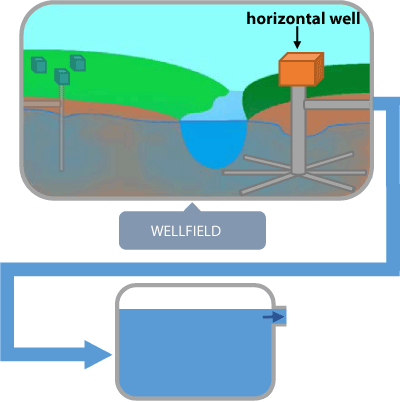
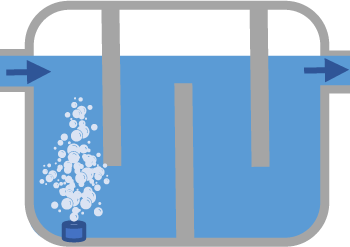
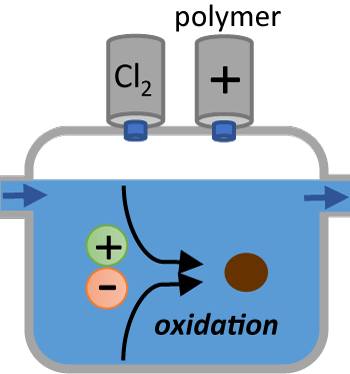



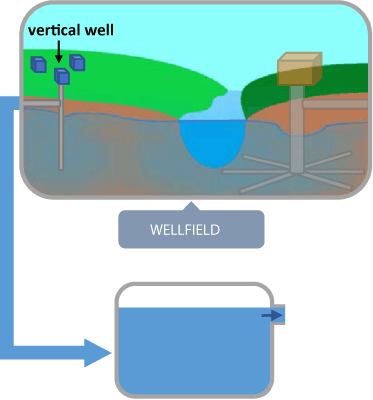
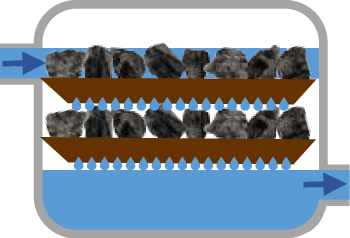

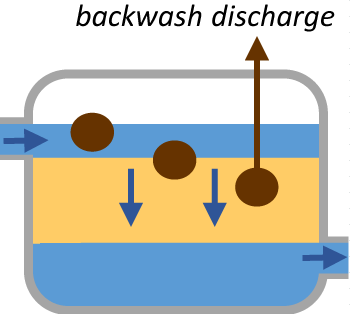

0 Response to "Are City of Lincoln Ne Wells Working Again"
Post a Comment